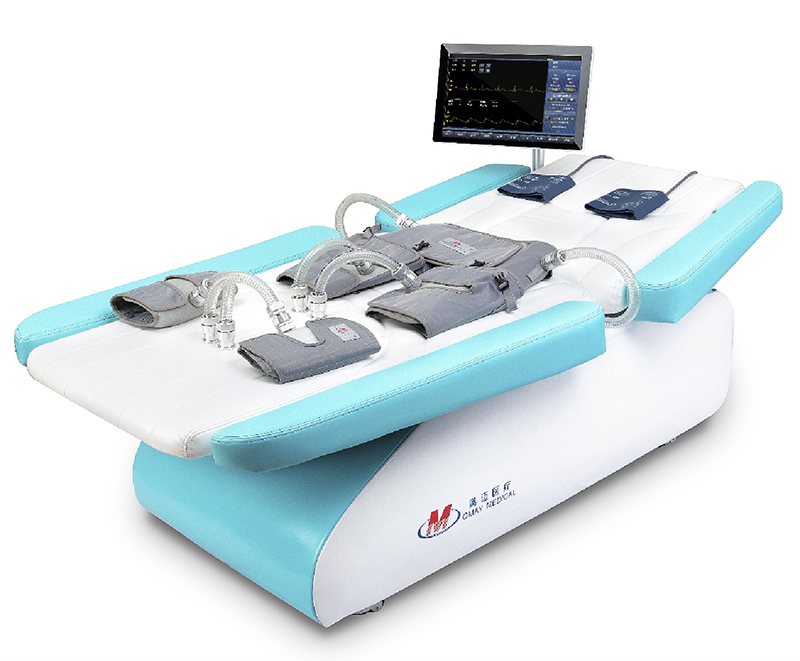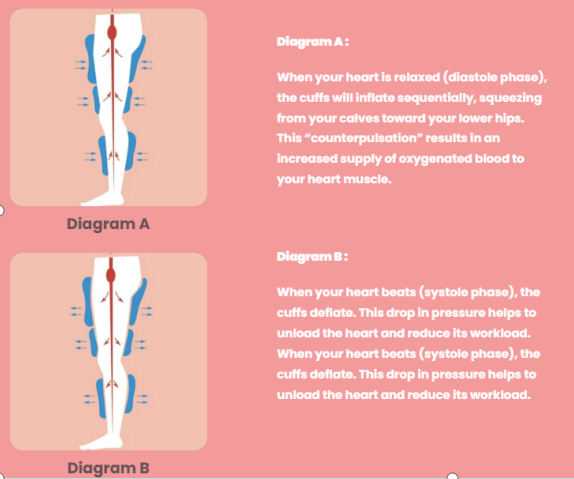
EECP Machine Non-invasive treatment for Stroke Patients

blood supply to vital organs like brain,heart and kidney,etc.

2. Pathophysiology of Ischemic Stroke and Rationale for EECP
An ischemic stroke occurs when a blood clot obstructs an artery supplying blood to the brain, leading to oxygen deprivation (ischemia), neuronal cell death, and neurological deficits. The primary goals of recovery are to:
Restore blood flow (reperfusion) to the ischemic penumbra (the vulnerable tissue surrounding the core infarct).
Promote the development of collateral circulation (natural bypass vessels).
Enhance endothelial function and neurovascular coupling.
EECP directly addresses these goals through its hemodynamic effects.
3. Mechanisms of Action: How EECP Benefits the Brain after Stroke
Enhanced Cerebral Perfusion: The diastolic augmentation generated by EECP creates a powerful pulse wave that significantly increases blood flow velocity in the cerebral arteries (e.g., middle cerebral artery). This helps perfuse the ischemic penumbra, potentially salvaging at-risk neurons.
Promotion of Collateral Circulation (Arteriogenesis): The repetitive, pulsatile shear stress on the vascular endothelium acts as a powerful stimulus for the opening and development of pre-existing collateral channels. This creates a "natural bypass" network around blocked arteries, improving long-term cerebral blood supply.
Improved Endothelial Function: EECP improves the health of the endothelium (the inner lining of blood vessels). It upregulates the production of beneficial vasodilators like Nitric Oxide (NO) and suppresses vasoconstrictors. This improves vascular elasticity and function systemically.
Neurohumoral Effects: EECP has been shown to reduce levels of inflammatory markers and oxidative stress, both of which play a detrimental role in post-stroke recovery. It may also favorably modulate the autonomic nervous system.
Angiogenesis: The increased shear stress and improved endothelial function can stimulate the formation of new microvessels, further enhancing tissue-level perfusion over time.
4. Clinical Evidence and Outcomes
Numerous studies, though often limited in size, have demonstrated promising results:
Improved Cerebral Hemodynamics: Transcranial Doppler (TCD) studies consistently show marked increases in cerebral blood flow velocity during and after a course of EECP treatment.
Neurological and Functional Improvement: Patients undergoing EECP therapy often show significant improvements on standardized scales such as the National Institutes of Health Stroke Scale (NIHSS), modified Rankin Scale (mRS), and Barthel Index (BI). Improvements are noted in motor function, speech, cognitive abilities, and overall quality of life.
A Well-Tolerated Procedure: EECP is generally very safe for stable stroke patients. It is non-invasive and does not carry the risks associated with surgery or thrombolytic drugs.
| Brand | Omay |
| Trigger ratio | 1:1 and 1:2,1:2 is for the patients whose heart rate is high |
| AF mode | with AF mode for the atrial fibrillation patients |
| Pressure range | 50~350mmHg |
| Certificate | SFDA |
Contact Details:
Attn:Jane Liao
Whatsapp/Phone/Wechat:+86-18520667125
Email:sales@eecpcn.com